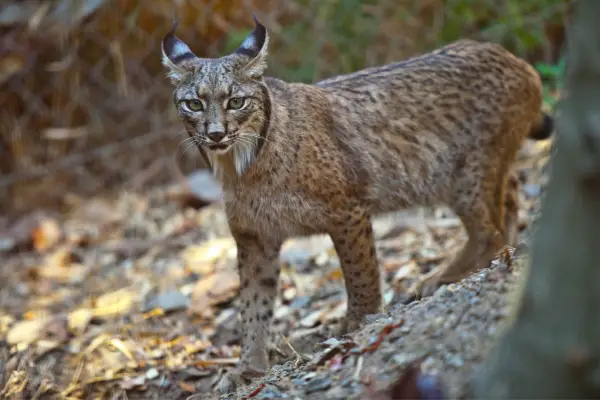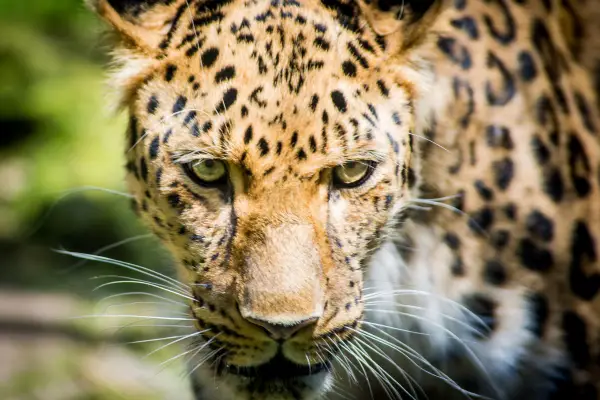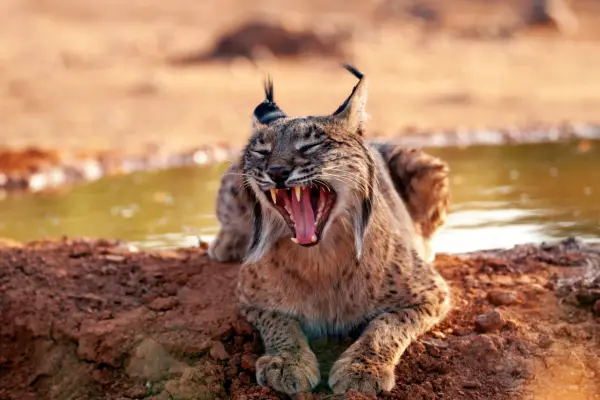The Rarest Cats on Earth
The world’s felines are under threat. While iconic big cats like lions, tigers, and cheetahs capture most of the headlines, smaller wild cat species are facing an even more uncertain future.
Two of the most endangered cat species on the planet are the Iberian lynx and the Amur leopard. These remarkable creatures are literally on the brink of extinction.
Conservation groups estimate there are less than 850 Iberian lynx left in the wild. The Amur leopard population is also critically low, with only around 84 remaining in the remote forests of southeastern Russia and northern China .
Losing either species would be devastating for global biodiversity. Organizations and government agencies are therefore, working urgently to implement captive breeding and habitat protection initiatives before these rare felines disappear forever.
The Reclusive Iberian Lynx of Spain and Portugal
The Iberian lynx (Lynx pardinus) is native to the Iberian Peninsula and uniquely adapted to the habitat and fauna of the region. Smaller than their northern relatives, they typically grow to around 3 feet long and weigh around 30 pounds. Their distinctive spotted, tawny coats camouflage them in the mixed scrubland and forests they inhabit.

Iberian lynx are supremely well adapted to hunting European rabbits, which comprise between 80-100% of their diet . They have excellent eyesight and stalking instinct. Using their speed in short bursts, they ambush prey among patches of tall grass.
Family groups will then share larger kills. While adaptable and resourceful, this specialized diet has contributed to the species’ sharp decline.
The accidental introduction of myxomatosis and Rabbit Hemorrhagic Disease devastated local rabbit populations last century. With fewer rabbits, lynx numbers crashed over the last 50 years. Already dealing with shrinking habitat, they now face starvation.
Illegal hunting and trapping have also significantly impacted Iberian lynx over decades of inadequate legal protections. As the national animal of Spain, and a beloved symbol of Iberia’s wild beauty, conservationists hope they can make a comeback. But with so few breeding pairs left, they remain critically endangered.
Bringing the Amur Leopard Back from the Brink
On the opposite side of the Eurasian landmass, another wild cat is running out of time. Fewer than 100 Amur leopards (Panthera pardus orientalis) remain in the remote Primorye region of southeastern Russia and adjoining forests of Northern China.
They represent the northernmost subspecies of leopards in the world, made for cold climates. But poaching, habitat destruction, and conflict with humans have pushed them to the very edge of extinction.

Unlike the more generalist diets of their African and Indian relatives, Amur leopards rely on deer and wild boars native to the region’s temperate forests. The rich diversity of life in this part of the world should be able to sustain more of these beautiful predators.
But rampant illegal logging and land clearing for farming has fragmented their habitat. Remaining leopards are left isolated in small pockets of remaining wilderness, making healthy breeding levels impossible.
Anti-poaching patrols by Russian wildlife authorities have helped reduce the threat in recent years . But there are still incidents of Amur leopards being killed by poachers or unsanctioned local hunters. Conservation groups criticize the outdated hunting and animal protection laws in Russia, China and North Korea.
It weakens protections for endangered species like Amur leopards and fuels demand for illegal wildlife products. Stronger enforcement and education on illicit wildlife trade are badly needed.
Hope Through Conservation Action
The situation may seem dire for both Iberian lynx and Amur leopards. But dedicated conservationists are working hard to bring these species back from the brink through innovative programs and interventions.
For the Iberian lynx, the focus is on captive breeding and reintroduction of cubs into suitable habitat across Spain and Portugal. Rangers carefully monitor lynx family groups in protected park reserves. Government agencies work to expand available habitat and connect fragmented groups through wildlife corridors.
And they’re finding success in reintroducing Iberian lynx bred in captivity with wild litters to boost genetic diversity [9]. If restoration programs can increase numbers into the thousands over the next decade, they’ll no longer be critically endangered.
There’s also hope for Amur leopards through emerging conservation partnerships between Russia and China focused on anti-poaching enforcement and habitat protection. Western zoos have cooperated for decades with Russian scientists on successful captive breeding research .
Leveraging their expertise and expanding breeding pairs can ensure genetic resilience. Ecotourism projects focused on rare glimpses of Amur leopards also show promise in generating economic alternatives to poaching through wildlife photography. Many conservationists consider these efforts a blueprint for stabilizing endangered species populations on the brink.

Losing Iconic Cat Species Threatens Global Ecosystems
From lions at the top of the food chain to the smallest of wild cats that keep rodent populations in check, felines play an irreplaceable role in diverse global ecosystems. The loss of the most endangered cat species would create imbalances that threatened many other plants and animals within their native habitats.
Protecting top predators like Amur leopards and Iberian lynx should therefore be a top conservation priority. We have so much to learn from them behaviorally and ecologically as well.
And they’ve captured the imaginations of cultures across Eurasia for centuries through ancient myths and legends. To allow magnificent hunter species who’ve roamed these lands for thousands of generations to vanish would be a profound tragedy.
That’s why environmental activists emphasize that securing these rare cats a future in the wild protects so much more. From blowback effects on climate change to losing aesthetic and recreational value for local communities, extinction has immeasurable costs.
If organizations can establish stable populations of at least a few thousand for Iberian lynx and Amur leopards, balancing conservation priorities with local development needs, we can promise future generations the chance to see these exotic felines in their natural habitat.


